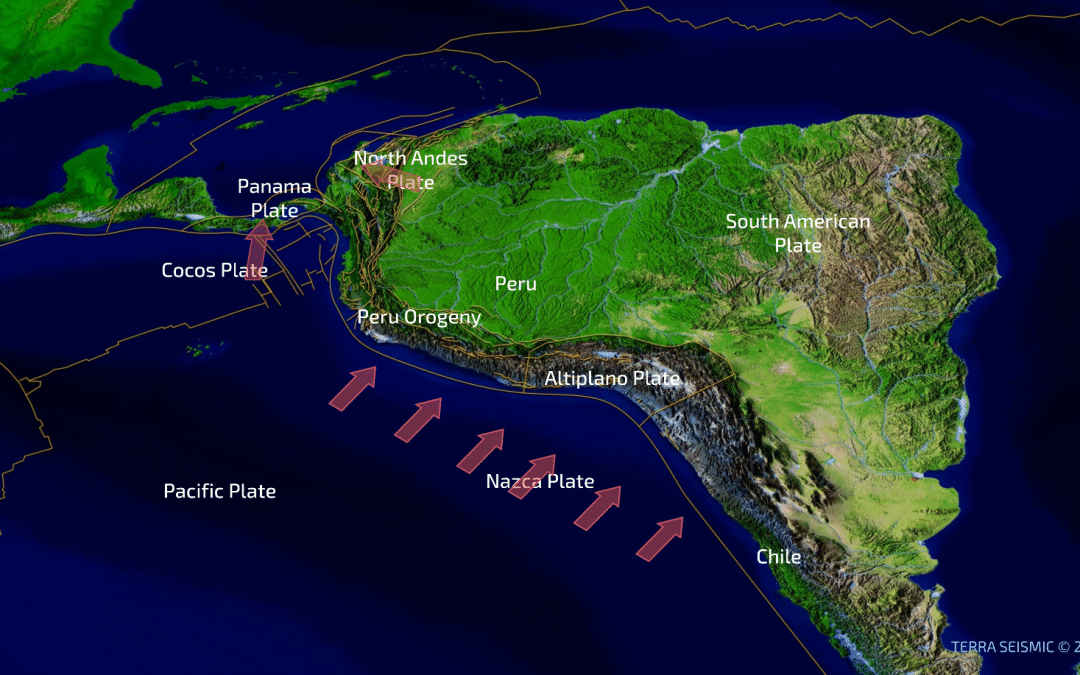Seismicity in Chile is profoundly influenced by its position along the boundary between the Nazca Plate and the South American Plate, where the Nazca Plate is subducting beneath the South American Plate. This tectonic setting is one of the most active earthquake zones globally, frequently experiencing powerful earthquakes and associated phenomena. Here are the primary factors that define seismicity in Chile:
Subduction Zone: Chile’s principal source of seismic activity is the Nazca Plate’s subduction beneath the South American Plate. This process is responsible for some of the largest earthquakes ever recorded, including the 1960 Valdivia earthquake, the most powerful earthquake ever documented.
Megathrust Earthquakes: Due to the subduction process, Chile is susceptible to megathrust earthquakes, which occur between the subducting Nazca Plate and the overlying South American Plate. These earthquakes release tremendous energy and can cause widespread destruction and tsunamis.
Deep and Shallow Earthquakes: Earthquakes in Chile occur at various depths. Deep-focus earthquakes happen within the descending Nazca Plate, while shallow-focus earthquakes occur near the Earth’s surface along the deformation zone between the two plates.
Volcanic Activity: The subduction process also fuels significant volcanic activity along the Andean Volcanic Belt in Chile. Volcanic earthquakes caused by the movement of magma are common in these regions.
Crustal Earthquakes: Apart from subduction-related activity, Chile also experiences crustal earthquakes due to stresses within the South American Plate. These can occur away from the immediate subduction zone and affect different parts of the country.
Tsunami Risk: Chile’s long coastline along the Pacific Ocean exposes it to significant tsunami risks following major subduction zone earthquakes. Historical tsunamis, such as those following the 1960 and 2010 earthquakes, have devastated Chile and reached across the Pacific.
Seismic Gaps: Certain segments along the Chilean subduction zone have historically experienced fewer large earthquakes. These “seismic gaps” are closely watched as potential sites for future large earthquakes.
Historical Seismicity: Chile’s history is marked by frequent, significant seismic events, which have shaped its landscape, built environment, and disaster preparedness policies. This historical seismicity provides important data for understanding future seismic risks and preparing accordingly.
The combination of these factors makes Chile one of the most seismically active countries in the world, necessitating robust earthquake preparedness and building codes to mitigate the risks associated with its dynamic geological environment.

